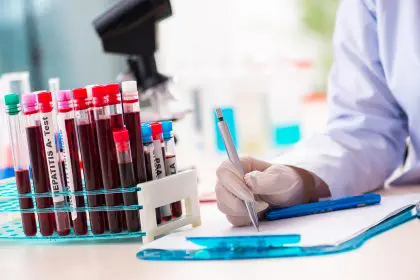Your liver works tirelessly behind the scenes, performing over 500 essential functions that keep you alive and healthy. This remarkable organ filters toxins, produces vital proteins, stores energy, and regulates countless metabolic processes. Yet despite its critical importance, your liver suffers in silence as modern diets loaded with sugar systematically damage its delicate structures and overwhelm its protective mechanisms.
The relationship between sugar consumption and liver damage represents one of the most underappreciated health crises of our time. While most people associate liver problems with alcohol consumption, the reality is that sugar can be equally destructive to this vital organ. The mechanisms through which sugar harms your liver are complex, insidious, and often undetectable until significant damage has already occurred.
Unlike other organs that quickly signal distress through pain or obvious symptoms, your liver has an extraordinary capacity to continue functioning even when severely compromised. This remarkable resilience becomes a double-edged sword, allowing damage to accumulate for years or even decades before symptoms emerge. By the time you notice problems, your liver may have already sustained irreversible harm.
The modern diet presents an unprecedented challenge to liver health. Processed foods, sweetened beverages, and hidden sugars in countless products expose your liver to sugar loads that far exceed what human physiology evolved to handle. Your ancestors consumed sugar primarily from seasonal fruits and occasional honey, but today’s average person consumes more sugar in a week than previous generations consumed in an entire year.
Understanding how sugar damages your liver empowers you to make informed decisions about your diet and health. The mechanisms of sugar-induced liver damage are well-established through extensive research, yet this knowledge remains largely hidden from public awareness. The following exploration reveals the seven primary ways sugar silently destroys your liver and threatens your long-term health.
Mechanism number 1: Overwhelming fructose metabolism pathways
When you consume sugar, particularly the fructose component found in table sugar and high-fructose corn syrup, your liver becomes the primary site of metabolism. Unlike glucose, which can be processed by cells throughout your body, fructose must be metabolized almost exclusively by your liver. This metabolic burden places enormous stress on liver cells and can quickly overwhelm their processing capacity.
Fructose metabolism in your liver follows a unique pathway that bypasses normal regulatory mechanisms. When glucose enters cells, it triggers feedback systems that slow down processing when energy stores are full. Fructose metabolism lacks these protective controls, allowing unlimited processing that can flood your liver with metabolic byproducts and intermediate compounds.
The rapid metabolism of fructose generates multiple toxic intermediates that can damage liver cells directly. These compounds include aldehydes, advanced glycation end products, and reactive oxygen species that attack cellular structures and DNA. The liver’s antioxidant systems can become overwhelmed when processing large amounts of fructose, leading to oxidative stress and cellular damage.
Your liver attempts to manage excess fructose by converting it to fat through a process called de novo lipogenesis. This fat production occurs rapidly and can exceed your liver’s ability to export the newly formed fats into your bloodstream. When fat accumulates faster than it can be removed, it begins to build up within liver cells, setting the stage for fatty liver disease.
The metabolic stress of fructose processing also depletes important cellular resources including ATP, the cellular energy currency. This energy depletion impairs your liver’s ability to perform its other essential functions, including detoxification, protein synthesis, and glucose regulation. The resulting metabolic dysfunction creates a cascade of problems that extend far beyond the liver itself.
Mechanism number 2: Triggering inflammatory cascade reactions
Sugar consumption initiates powerful inflammatory responses within your liver that can persist long after the sugar has been metabolized. This inflammation begins at the cellular level as liver cells respond to the metabolic stress of processing excess sugar. The inflammatory cascade involves multiple immune system components and can become self-perpetuating even after the initial trigger is removed.
The inflammatory response starts when liver cells recognize the byproducts of sugar metabolism as potential threats. This recognition activates specialized immune cells called Kupffer cells, which are the liver’s resident immune guardians. These cells release inflammatory molecules called cytokines that attract additional immune cells and amplify the inflammatory response.
Chronic inflammation damages liver architecture by promoting the formation of scar tissue. Inflammatory cells release enzymes and reactive molecules that break down healthy liver tissue and stimulate the production of collagen fibers. Over time, this process can lead to fibrosis, where normal liver tissue is gradually replaced by scar tissue that cannot perform normal liver functions.
The inflammatory environment also disrupts normal liver cell regeneration. While your liver has remarkable regenerative capacity under normal circumstances, chronic inflammation interferes with this healing process. Inflammatory signals can cause liver cells to undergo programmed cell death while simultaneously preventing the formation of healthy replacement cells.
Inflammation spreads beyond the liver through the bloodstream, affecting other organs and systems throughout your body. The inflammatory molecules produced in your liver travel to other tissues, potentially contributing to cardiovascular disease, diabetes, and other chronic conditions. This systemic inflammation helps explain why liver damage often coincides with other metabolic disorders.
Mechanism number 3: Accelerating fatty liver disease progression
Fatty liver disease develops when fat accumulates within liver cells, and sugar consumption is one of the most potent triggers for this dangerous condition. The process begins almost immediately after consuming sugar, as your liver converts excess fructose into triglycerides that can accumulate within liver cells. This fat accumulation initially occurs without symptoms, making it a silent threat to your health.
The progression from simple fat accumulation to more serious liver disease follows a predictable pattern. Initially, fat deposits cause liver cells to swell and become less efficient at performing their normal functions. As fat accumulation continues, it begins to interfere with blood flow through the liver and disrupts the normal cellular architecture that allows the liver to function optimally.
Fat-laden liver cells become more susceptible to damage from other sources including toxins, medications, and oxidative stress. The accumulated fat makes liver cells more fragile and less able to withstand normal metabolic stresses. This increased vulnerability can accelerate the progression from simple fatty liver to more serious inflammatory conditions.
The presence of excess fat in liver cells also triggers the activation of inflammatory pathways that can lead to a more serious condition called steatohepatitis. In this condition, fat accumulation is accompanied by inflammation and liver cell death. The combination of fat, inflammation, and cell death creates an environment that promotes the development of scar tissue and progressive liver damage.
Advanced fatty liver disease can progress to cirrhosis, a condition where scar tissue replaces normal liver tissue. Cirrhosis represents end-stage liver disease and can ultimately lead to liver failure. The progression from simple fatty liver to cirrhosis can occur over years or decades, often without obvious symptoms until the damage becomes severe.
Mechanism number 4: Disrupting insulin signaling pathways
Sugar consumption profoundly disrupts insulin signaling within your liver, creating a cascade of metabolic dysfunction that extends far beyond glucose regulation. When you regularly consume high amounts of sugar, your liver cells become less responsive to insulin signals, a condition known as insulin resistance. This resistance forces your pancreas to produce ever-increasing amounts of insulin to maintain normal blood sugar levels.
The development of hepatic insulin resistance creates a vicious cycle that promotes further liver damage. As liver cells become resistant to insulin, they lose their ability to properly regulate glucose production and storage. This dysregulation leads to elevated blood sugar levels, which trigger additional insulin release and perpetuate the cycle of resistance.
Insulin resistance in your liver also affects fat metabolism in dangerous ways. Normally, insulin helps regulate the balance between fat storage and fat burning within liver cells. When insulin signaling becomes disrupted, this balance shifts toward excessive fat storage and reduced fat oxidation, accelerating the development of fatty liver disease.
The high insulin levels that result from insulin resistance have direct toxic effects on liver cells. Chronic exposure to elevated insulin levels promotes inflammation, increases oxidative stress, and stimulates pathways that lead to liver cell death. These effects compound the damage caused by other sugar-induced mechanisms.
Hepatic insulin resistance also disrupts your liver’s ability to produce and secrete glucose appropriately. This dysfunction contributes to the development of type 2 diabetes and creates additional metabolic stress that further damages liver cells. The interconnected nature of these metabolic disruptions makes insulin resistance both a consequence and a cause of progressive liver damage.
Mechanism number 5: Generating dangerous oxidative stress
The metabolism of sugar in your liver generates massive amounts of reactive oxygen species and other free radicals that can cause severe cellular damage. These highly reactive molecules attack cellular components including proteins, lipids, and DNA, leading to widespread dysfunction and cell death. The liver’s natural antioxidant systems can become overwhelmed when processing large amounts of sugar, leaving cells vulnerable to oxidative damage.
Oxidative stress occurs when the production of free radicals exceeds your liver’s ability to neutralize them with antioxidants. Sugar metabolism is particularly prone to generating oxidative stress because the rapid processing of fructose produces multiple reactive intermediates simultaneously. These molecules can react with cellular structures faster than protective systems can respond.
The damage caused by oxidative stress is cumulative and progressive. Each episode of high sugar consumption adds to the total burden of oxidative damage, gradually weakening liver cells and impairing their function. Over time, this accumulated damage can overwhelm the liver’s repair mechanisms and lead to irreversible cellular dysfunction.
Oxidative stress also amplifies other mechanisms of liver damage. Free radicals can activate inflammatory pathways, disrupt insulin signaling, and promote the formation of toxic protein aggregates within liver cells. This interconnected damage creates a self-reinforcing cycle where oxidative stress both causes and results from other forms of liver injury.
The mitochondria, which are the cellular powerhouses that produce energy, are particularly vulnerable to oxidative damage. When mitochondria are damaged by free radicals, they become less efficient at producing energy and may actually produce more reactive oxygen species. This mitochondrial dysfunction further impairs liver cell function and contributes to the progressive nature of sugar-induced liver damage.
Mechanism number 6: Promoting advanced glycation reactions
Sugar molecules can directly bind to proteins and other cellular components in your liver through a process called glycation. These glycation reactions produce harmful compounds called advanced glycation end products that accumulate within liver cells and disrupt normal cellular function. The formation of these toxic compounds is accelerated by high sugar concentrations and can cause irreversible damage to liver structures.
Advanced glycation end products interfere with normal protein function by changing their structure and properties. When essential liver proteins become glycated, they lose their ability to perform critical functions including enzyme activity, structural support, and cellular communication. This protein dysfunction contributes to the progressive decline in liver function that occurs with chronic sugar consumption.
The accumulation of advanced glycation end products also triggers inflammatory responses within your liver. Immune cells recognize these modified proteins as foreign substances and mount inflammatory attacks against them. This inflammatory response can cause collateral damage to healthy liver tissue and contribute to the chronic inflammatory state that characterizes sugar-induced liver disease.
Glycation reactions are particularly damaging to the structural proteins that maintain liver architecture. Collagen and other support proteins can become cross-linked and distorted through glycation, leading to changes in liver stiffness and function. These structural changes can impair blood flow through the liver and interfere with the normal exchange of nutrients and waste products.
The formation of advanced glycation end products is irreversible under normal physiological conditions. Once these toxic compounds form within liver cells, they tend to accumulate over time, creating a progressive burden of cellular damage. This irreversible nature of glycation damage helps explain why the effects of chronic sugar consumption on liver health can persist even after dietary changes are made.
Mechanism number 7: Depleting essential cellular resources
High sugar consumption depletes your liver cells of essential nutrients, cofactors, and energy resources needed for normal function and repair. The rapid metabolism of sugar requires numerous vitamins, minerals, and enzymatic cofactors that may become depleted when sugar intake is excessive. This nutrient depletion impairs your liver’s ability to perform its essential functions and maintain cellular health.
The metabolism of fructose is particularly demanding of cellular resources. Processing fructose requires significant amounts of phosphate groups, which are removed from ATP stores to fuel the metabolic reactions. This ATP depletion can impair energy-dependent processes throughout liver cells, including protein synthesis, detoxification reactions, and cellular repair mechanisms.
Sugar metabolism also consumes important antioxidants including glutathione, vitamin C, and vitamin E. These protective compounds are essential for neutralizing the free radicals generated during sugar processing. When antioxidant stores become depleted, liver cells become more vulnerable to oxidative damage and inflammation.
The depletion of methyl groups represents another critical resource drain caused by excessive sugar consumption. Methyl groups are essential for numerous cellular processes including DNA repair, protein modification, and the synthesis of important compounds like phosphatidylcholine. When methyl group availability becomes limited, these essential processes become impaired.
Chronic resource depletion creates a state of cellular stress that impairs your liver’s regenerative capacity. Liver cells require adequate nutrients and energy to undergo normal repair and replacement processes. When these resources are constantly diverted to sugar metabolism, the liver’s ability to heal from damage becomes compromised, allowing injury to accumulate over time.
Recognizing the silent progression
The insidious nature of sugar-induced liver damage lies in its ability to progress for years without obvious symptoms. Your liver has an extraordinary functional reserve, allowing it to continue performing essential tasks even when significantly damaged. This remarkable resilience masks the developing problem until damage becomes severe enough to overwhelm the liver’s compensatory mechanisms.
Early stages of sugar-induced liver damage may produce only subtle symptoms that are easily attributed to other causes. Fatigue, mild digestive issues, and occasional abdominal discomfort can be early warning signs that are often dismissed as stress, aging, or dietary indiscretions. These nonspecific symptoms make it challenging to recognize liver damage in its early, most treatable stages.
As damage progresses, symptoms may become more noticeable but still remain relatively mild. Increased fatigue, difficulty losing weight, elevated blood pressure, and changes in cholesterol levels can all indicate developing liver dysfunction. However, these symptoms are common to many health conditions and may not immediately suggest liver problems.
The silent nature of liver damage means that routine medical evaluations may not detect problems until they become advanced. Standard blood tests may remain normal for years while significant liver damage accumulates. More sensitive tests and imaging studies may be needed to detect early stages of sugar-induced liver disease.
Understanding the mechanisms through which sugar damages your liver empowers you to take proactive steps to protect this vital organ. Reducing sugar intake, supporting liver function through proper nutrition, and maintaining a healthy lifestyle can help prevent or slow the progression of sugar-induced liver damage. The liver’s remarkable regenerative capacity means that positive changes can lead to meaningful improvements in liver health, even after damage has occurred.
Your liver’s health directly impacts your overall wellbeing, energy levels, and longevity. By recognizing how sugar silently damages this crucial organ, you can make informed decisions that protect your liver and support your long-term health. The choice to reduce sugar consumption and support liver health is an investment in your future vitality and quality of life.















